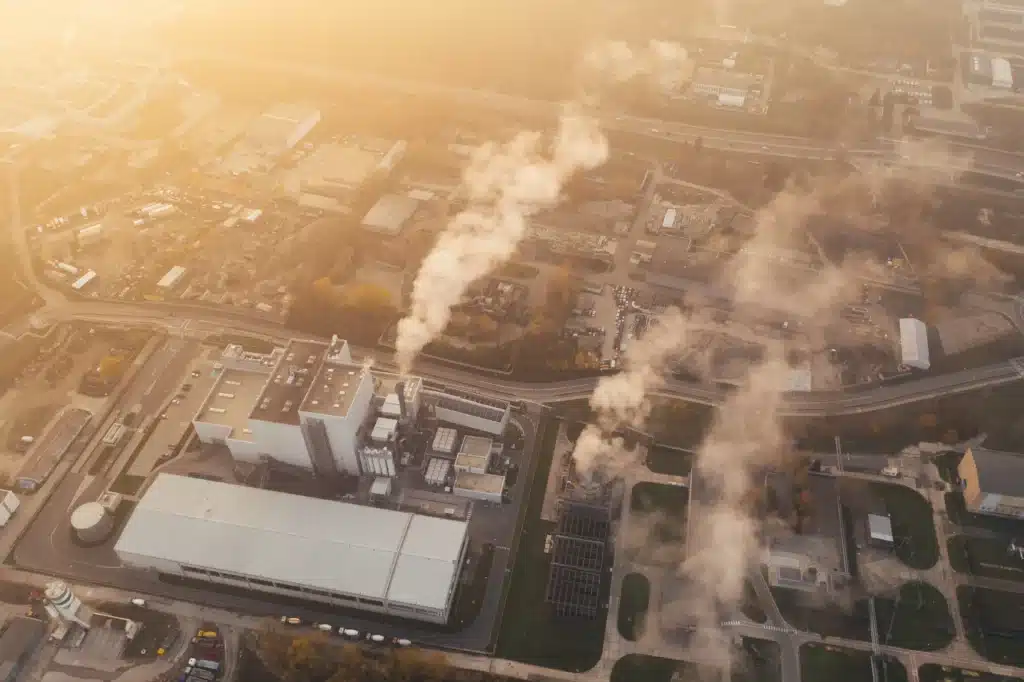Our Solutions: Combustible Dust

A Hazardous Area Classification (HAC) study involves classifying an operating area based on the likelihood of ignition of flammable material considering flammable gas/vapor/combustible dust sources. It is a special form of hazard and risk assessment that addresses the likelihood that an explosive atmosphere (flammable dust/air mixture) is present in a certain location.
In the US, the HAC is performed using a system of three classifications and two divisions (per the NFPA standard).
After the HAC, the facility needs to ensure that all equipment complies with the designated area electrical classification.
The driving force behind HAC is traditionally the need to ensure that electrical installations do not pose an ignition hazard in a plant handling flammable or combustible material, i.e., flammable liquids, gases or vapors or combustible dusts.
A visit to your facility to observe and review operations of flammable solvent, gases and powder/dust handling processes, abnormal/normal operation, equipment, and plant construction and layout
Identification of combustible dust hazards and review of combustible dust testing data
Identification of locations where explosible dust cloud atmospheres could be present.
Classification of hazardous areas by establishing the likelihood, extent, and duration of flammable atmospheres
Application of the latest guidelines and the relevant codes and standards
Application of the flammability/ combustibility characteristics of hazardous substance present
Advise on the selection, and installation of electrical apparatus and Explosion-Proof Equipment and wiring that is suitable for use in classified hazardous areas
Check on the equipment installation and its suitability for safe use in its classified location
Evaluation of other potential ignition sources that could be present under normal and foreseeable abnormal conditions
Recommendations for effective and practical hazard and risk control measures

Sigma-HSE is your single solution provider for hazardous area classification and beyond.
Sigma-HSE can assist you in identifying the areas in a facility where flammable atmospheres and combustible dust can be found in both new and existing facilities and guide you through the complexities of the classification process.
Sigma-HSE has the required resources, knowledge, and experience to conduct a comprehensive HAC and recommend safe, pragmatic, and cost-effective solutions for dust or flammable solvent or gases hazard mitigation.
Discover our extensive range of Process Safety Testing and explore our process safety video tests firsthand.
Hazardous areas are locations where explosive atmospheres, consisting of flammable gases, vapors, combustible dusts, or ignitable fibers/flyings can occur, posing a risk of fire or explosion.
Understanding the hazards of materials and classifying their locations accordingly allows for installation of rated equipment vital to ensure the safety of personnel and equipment in the hazardous areas.
In the US, hazardous area classifications are governed by NFPA 70, National Electrical Code (NEC). The NEC provides requirements for electrical installations, including those in hazardous locations, in the United States.
NFPA 497, Recommended Practice for the Classification of Flammable Liquids, Gases, or Vapors and of Hazardous (Classified) Locations for Electrical Installations in Chemical Process Areas, provides guidelines for classifying hazardous locations where flammable/explosive gases and solvents are present.
NFPA 499, Recommended Practice for the Classification of Combustible Dusts and of Hazardous (Classified) Locations for Electrical Installations in Chemical Process Areas, provides guidelines for classifying hazardous locations where combustible dusts and fibers are present.
Hazardous area classification is a process of analysing and classifying an environment based on the type of flammable material present and the probability of its occurrence.
The National Electrical Code (NEC) defines hazardous locations as areas where fire or explosion hazards may exist due to flammable gases or vapors, flammable liquids, combustible dust, or ignitable fibers or flyings.
The purpose of this is to ensure the correct selection and installation of equipment prevent ignition sources.
The Class/Division system is primarily used throughout North America to classify hazardous areas. It involves categorizing locations based on Class
Class I gases and solvents
Class II combustible dust
Class III combustible fibers/flyings
The assignment of division (e.g., Division 1, Division 2) is based on the likelihood that the hazardous atmosphere will be present.
Group assignment (e.g., Group A, B, C, D, E, F, G) is based on the type of hazardous material used.
Precautions include compliance with classifications (according to NEC), training and awareness programs, prevention of ignition sources, regular maintenance and inspection, proper ventilation, use of appropriate Personal Protective Equipment (PPE), and implementation of an emergency response plan and permit-to-work system.
Hazardous area classification studies are typically performed by a team of engineers, including a process engineer and an electrical engineer.
The team may also include client personnel and others knowledgeable of the process and operating procedures. Specialists from plant operations and health, safety and environment (HSE) may also be involved.
Explosion-proof protection is a type of protection that involves using an enclosure capable of withstanding an explosive gas or vapor within it.
The enclosure also prevents the ignition of an explosive gas or vapor surrounding it.
This type of protection operates at an external temperature that ensures the surrounding explosive atmosphere will not be ignited.
Intrinsically safe protection ensures that electrical equipment, under normal or abnormal conditions, is incapable of releasing sufficient electrical or thermal energy to cause ignition of a specific hazardous atmospheric mixture in its most easily ignitable concentration.
Our consultants undertake a hazardous area classification in a holistic way to eliminate potential fire, and explosion hazards and risks that could affect plant personnel.
Sigma-HSE can assist you in identifying the areas in a facility where flammable atmospheres and combustible dust can be found in both new and existing facilities and guide you through the complexities of the classification process.
By implementing best practices, our actionable insights determine what practicable control measures and recommendations should be made for your company to optimise safety and reduce the level of risk to people, business, existing facilities, workplace, and environment.
Protect your people, the environment, your property and your reputation from potentially unsafe equipment in hazardous area zones and comply with explosive atmospheres regulations. Learn more about how we can assist you today.

Are you visiting Sigma-HSE from outside your region? Visit your regional site for more relevant process safety solutions.